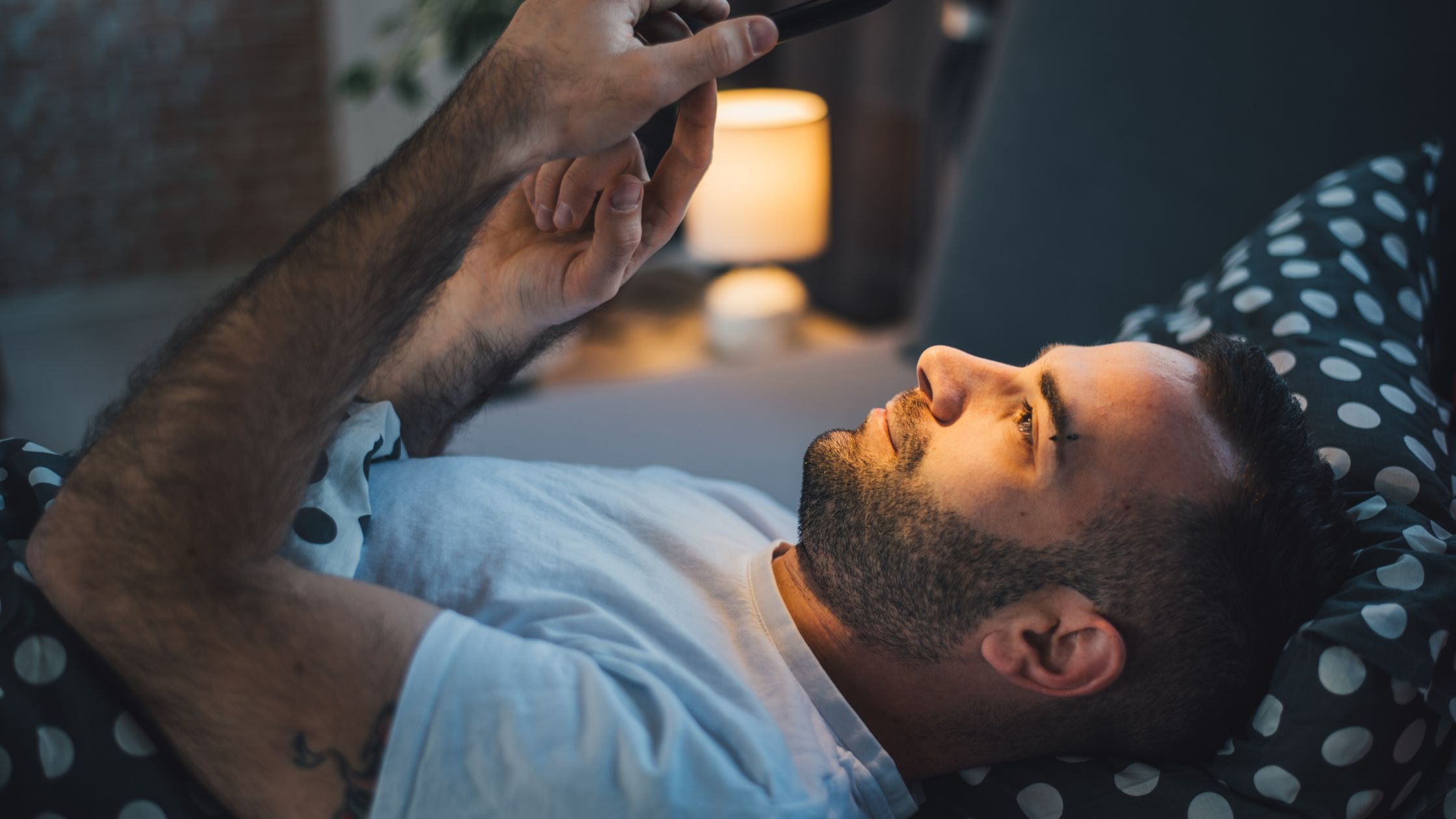Blue Light: Blue Alert

Blue light has been with us all day long since smartphones, tablets and computers became part of our everyday lives. We are said to use our cell phones alone up to 150 times a day. According to a study by auditing firm EY, Germans aged 21-30 spend 6.9 hours a day surfing, using apps and playing games.
Blue light is not as harmless as you might think. These are rays that penetrate deeper into our skin than UVA rays. Although research is still in its infancy, creams and glasses are already available to protect the skin and eyes from the effects of blue light.
Blue Light – what exactly is it?
Blue light is not an invention of the computer age. Blue light, known as HEV light (High Energy Visible Light), has always existed. It is the visible light that colors the sky such a beautiful blue. In the wave spectrum, it lies directly next to the UV range, so it also occurs in normal daylight. It makes up almost half of the sunlight spectrum. But it’s not just our popular communication tools that emit blue light, neon tubes and modern LEDs do too.
Excessive exposure to such light sources can damage the eyes and disrupt the sleep-wake rhythm. This has been scientifically proven. But blue light also has its good sides: In small doses, it can also have positive effects, just like sunlight. In dermatology, blue light has been used for years specifically to treat acne and neurodermatitis. Studies have shown that it also benefits the psyche, e.g. in cases of winter depression.
Do you already have a “screen face”?
Less encouraging is a more recent finding that radiation causes us to age prematurely. Experts speak of “indoor smog” and the “screen face”. “Blue light penetrates deep into the lower layers of the skin,” explains Swiss dermatologist Dr. Felix Bertram. “We assume that the high-energy blue light causes oxidative stress in the skin, similar to UVA radiation.”
On its way into the deep tissue layers, HEV forms large quantities of free radicals, which cause the destruction of important connective tissue fibers such as collagen and elastin. This in turn causes wrinkles to appear at an early stage and the skin loses elasticity, particularly in the chin and cheek area. In addition, the natural barrier layer becomes weaker and therefore more susceptible to external influences. This then manifests itself in irritation and redness, for example. Blue light is also associated with hyperpigmentation, i.e. brown spots.
Blue light filters ward off HEV
The skin’s natural protective mechanism is unable to cope with excessive amounts of blue light. This is why the industry is researching “blue light filters” for cosmetic products to ward off HEV light. There are several concepts for this: The American pharmaceutical company Lipo Chemicals has developed Liposhield®HEV Melanin, a patented ingredient that acts like a “protective shield” for the skin. A few products with this new type of photo-immune protection are already on the market..
So-called tyrosinase inhibitors against pigment formation such as kojic acid, arbutin and butylresorcinol are also used. The innovative active ingredient thiamidol has proven to be far more potent. Another approach is the stimulation of opsins. These are the body’s own protective systems that react to certain wavelengths. Until now, they were only known to be present in the cells of the eye retina. Scientists have now discovered that these opsins are also found in the uppermost layer of the skin as well as in corneal and pigment cells. This means that our skin can “recognize” light.
Skin protector named Opsine
So when blue light from the smartphone hits the skin, the opsins mobilize and stimulate the release of a specific repair protein. However, if HEV irradiation lasts too long, fewer protective opsins are formed. The result is more free radicals. This results in oxidative stress, which damages our skin cells and accelerates the ageing process.
Light absorbers and light-reflecting pigments such as iron oxides are also said to have a similar effect to sun cream. Some UV protection products already contain substances such as licochalcone A and glycyrrhetinic acid, which can reduce the negative potential of HEV light. Most skin care products against blue light attacks rely on antioxidants to protect again.
Practicing digital detox more often
Paracelsus already knew that the dose makes the poison. This also applies to blue light. For health reasons, we should reduce the amount of time we spend in front of smartphone displays or monitors. Otherwise, we may regret it later, as the damage does not occur immediately, just like with UV light. The eyes are particularly at risk when you consider that the blue rays penetrate directly into the retina. This can promote diseases such as macular degeneration, which leads to loss of visual acuity.
Prevention is good, but there is no need to drive yourself crazy when it comes to digital aging, as a study from Beiersdorf Research shows: The HEV light intensity of 172 hours in front of a monitor (30 cm distance) is about the same as spending one minute in the sun in Hamburg in summer. A further measurement showed that the HEV light intensity directly in front of the screen (2 cm distance) increases 17-fold compared to a distance of 30 cm. This means that approximately ten hours of smartphone use is equivalent to one minute of sun exposure.
Anti-blue light methods
Nevertheless, you shouldn’t overdo it with your digital activities. After all, these are not the only blue light attacks that our skin has to cope with. Just think of the normal daylight that shines on us even when the sky is overcast. That’s why everyone needs to check their own lifestyle and decide what they want to expose their skin to on a daily basis.
Anyone who exposes their skin to too many oxidative stress situations could benefit from an anti-blue light cream – at least on their personal high peak days. To reduce the total amount of blue light, it is also worth investing in blue filter glasses that you can wear during the day. People who wear glasses can have a filter “built in” to their glasses at an optician – for a small extra charge. Always switch on night mode for longer activities on your smartphone. This has also been available on tablets for a while now, and there are corresponding apps for laptops. All this means that less or no blue light is emitted.

CultureAndCream Author from Munich
To travel during my profession as a beauty journalist was never enough for my. Also my six month on a world trip didn’t do it. It always attracts me to other cities, foreign countries, on roadtrips and places I don’t know yet. But I am not only interested in “culture” and “cream”, I am also fascinated by people who have stories to tell . Such unique experiences I want to share with you.



